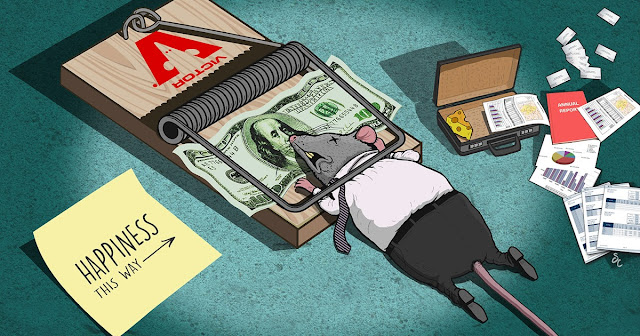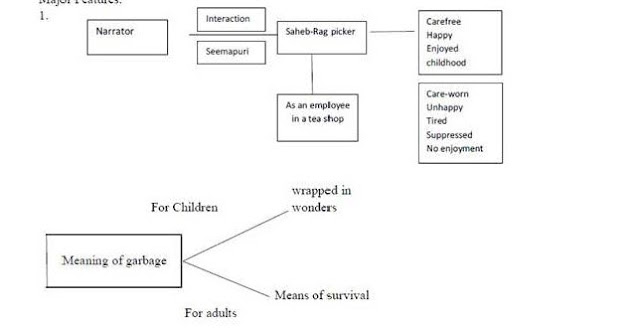The Rattrap
- Selma Lagerlof
Characters
- A tramp with rattraps.
- A crofter
- Master Smith in the Ramsjo Iron Mill in Sweden
- Helpers in the Mill – blacksmiths
- Iron mill owner
- Edla Willmansson – daughter of the Iron Mill owner.
“The Rattrap” is an appropriate title as it is the story of a rattrap peddler. The author has used the metaphor of a Rattrap to highlight the human predicament. Just as a rat is fooled by the bait and gets trapped, most human beings also fall into the trap of material benefits. The story revolves around the incident of a man getting trapped due to his greed. Hence, the title is an apt one.
THEME
Human beings are prone to fall into the trap of material benefits. It is the human tendency to redeem oneself from dishonest ways. Hence, the whole world is called a big rattrap which tempts the people towards its materialistic benefits and brings about their doom and never-ending predicament.
It also highlights the themes like human loneliness, status and treatment meted out to have-nots, and the callous attitude of society and government towards such people.
One of the themes is that man is inherently good by nature. The society and environment make them bad. Human goodness and kindness can bring about a change in their attitude.
The Rat Trap” written by Selma Lagerlof is a short story about an old disheartened beggar and thief who is taken in and shown generosity by a young woman, her kindness changes his bitter attitude about life. A peddler is a man who has fallen upon misfortune and now resorts to selling rattraps, begging, and thievery. He is very pessimistic about the world around him and sees the world as merely a “rat trap”. He believes that society tempts us with riches and fine things, and when we accept, we are caught in the trap and are left with nothing.
The warmth of compassion extends its rays around the world, engraving mankind with its characteristics. Selma Lagerlof supports the theory of compassion in her modern-day short story “The Rat Trap” which depicts the powerful and positive impacts of such care. In the story, cynicism grips the protagonist rat trap peddler until the old man and the blacksmith’s daughter infect the protagonist with their altruism. Thus, the peddler’s inner soul experiences a rapid transformation from an ugly duckling to a dazzling swan.
Legerlof’s first scene of compassion is from the old man’s hospitality. Despite the fact that he did not know the peddler, the old man still opened his arms and acted charitably by providing food and shelter. This action is not typical in today’s world; a majority of us would turn a blind eye. However, although the old man showed a sign of compassion, it was not appreciated—the protagonist stole from the old man. As the peddler ponders on the road of guilt, he soon receives a second action of care from a little girl.
Compassion is illustrated when the blacksmith’s daughter takes pity on the protagonist. Although she knew the fact that he was not Captain von Stahle, whom he claimed to be, the girl said, ” I think he ought to stay with us today. I don’t want him to go.” The girl’s compassionate words cracked the foundation of the protagonist’s cynical world. Throughout the story, the protagonist only believed in the dismal side of human nature, survival of the fittest, and viewed the world as a battlefield. His whole belief system was shattered when he received the girl’s pity and an opportunity to enjoy his first “true” Christmas.
Lagerlof’s “The Rat Trap” strongly validates the concept that compassion revolves around the humankind. She provides evidence when the old man and the blacksmith’s daughter show compassion towards the protagonist. As a result, the girl acted as the North Star, guiding the protagonist out of the trap of cynicism.
Another lesson the mendicant learns throughout the course of the story is to be considerate of others. At the end of the novel, he makes amends with the old man by returning his money and writing Edla a thank you note. He understands what he did to the man was wrong and that was not returning the kindness and trust given to him. He apologized for lying to the girl and her father and leaves her a present, a rat trap and the stolen money(thirty croner bills) of the old man to be returned.
Main points
- ‘The Rattrap’ is a story that underlines the belief that essential goodness in human beings can be aroused through sympathy, understanding, and love.
- Once a man went around selling small rattraps but he took to begging and thievery to keep his body and soul together.
- One day he was struck with the idea – the whole world is a big rattrap and it offers riches as bait.
- People let themselves be tempted to touch the bait then it closes in on them bringing an end to everything.
- One dark evening the rattrap peddler sought shelter in an old crofter’s roadside cottage.
- The old man gave him food, tobacco they enjoyed the card game too.
- Next morning the peddler stole away his thirty kroners.
- The rattrap peddler escaped into a big confusing forest and got lost.
- While resting on the ground he recollected his idea that the world is a rattrap and thought his end was near.
- Hearing a thumping sound he reached Ramsjo ironworks for a night shelter.
- The owner came on his nightly rounds and noticed the ragged wretch near the furnace.
- He took him as an old acquaintance ‘Nils Olof.’
- He invited him to stay with them for Christmas but the stranger declined the offer.
- His daughter Edla Willmansson persuaded to go home with him.


